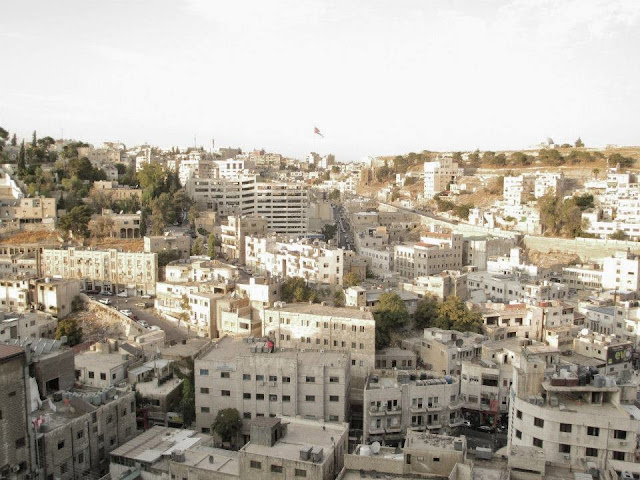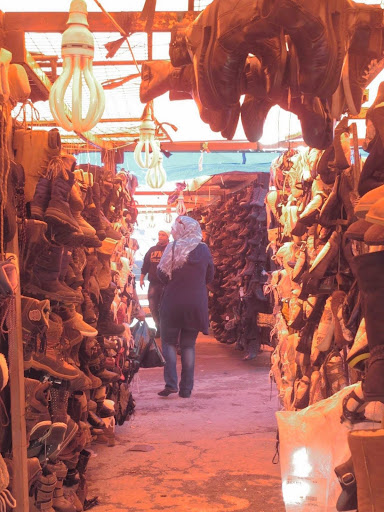Before studying abroad in Amman, Jordan in the fall of 2012, my last moments in the United States were spent at the McDonald’s in the Pittsburgh International Airport. Now I am not a big fast food person, but I felt like I needed to absorb as much American culture as I could before leaving the country. So there I was, eating my Big Mac, thinking of the million and one things that terrified me about leaving the country. The overwhelming concept of being both culturally and linguistically lost in a foreign land was settling into my stomach and slowly spreading to my extremities in the form of anxiety and panic. It was like the practical side of my brain reminded me all of the sudden that I have absolutely no idea what I am doing. My Arabic skills were pretty much limited to “hi”, “how are you”, and “My name is John” - and my imagery of Middle Eastern society mostly consisted of various scenes from Disney’s Aladdin.
Although, to give myself a little credit, I did watch the news regularly and was well informed on current events in the Arab world. This, however, also was not a source of comfort considering most stories revolved around revolution, war, oppression, extremism, and anti-Western sentiment. I thought that many people in the Middle East must be very blunt and close-minded since they had to deal with such a harsh reality on a daily basis. Maybe they would have problems accepting an American into their largely conservative and religious society.

Amman, Jordan
On the contrary, when I finally found the courage to leave my American comfort zone and make the trip across the ocean, I was met with overwhelming openness and understanding among Jordanians. Jordan remains a relatively stable country compared to most other Middle Eastern nations, and despite the serious situation that surrounds the nation on a daily basis, the people are remarkably laid back.
There is a slightly xenophobic attitude in the United States towards Muslims and people of Middle Eastern descent due to the September 11th attacks, and because of this, the region has received the label of “dangerous” for all westerners. What I found, however, is that the “dangerous” parts are few and far between. We see one story portrayed through the media, which mainly illustrates a culture of anti-Western sentiments. So I want this post to clarify the truth about the Middle East in some ways that surprised me. I also hope that readers take my observations with a grain of salt, since the observations of a culture cannot be fully articulated by one person.
Clothing
After coming back from Jordan, I had some people ask me if I had worn any type of head covering while I was there. The answer is no. In fact, the only men that wear the kofeeyyuh, which is what the male headscarf is called, were the people that live in very rural and traditional areas of Jordan. Most men dress much nicer than we would dress here in the US. However, shorts are frowned upon for both men and women. It seems ironic, considering the hot climate, but revealing one's legs is a big no-no. One day after playing soccer in shorts (sports are the exception to this rule), I walked to get a taxi without changing back into long pants. You would have thought that there was nothing else interesting to stare at, because everyone’s eyes seemed to follow me down the university sidewalk.

The 'Kofeyyuh'
There is a wide range of clothing for women. Although the majority of women wear the hijab or niqab (full body veil with only the eyes showing), women have the choice if they want to wear the headscarf or not. The population of women that do not wear the headscarf usually consisted of a combination of Christians (who are not expected to wear the headscarf) and Muslims who decide that they do not want to. For example, Queen Rania is a famous Jordanian who chooses not to wear the hijab. Some Americans see the headscarf as a symbol of women’s oppression, but I found that women often would wear their headscarves as a fashion statement the same way a woman in the US would wear high heals or jewelry as a fashion statement. Just because someone is wearing conservative clothing does not mean they are not trying to impress people.
Similar to the United States, Jordan has a wide variety of people with different viewpoints. Rainbow Street, aptly named for its diversity, has various clubs and bars and tends to attract a younger, more liberal crowd. It would not be too unusual to see women wearing clothing that is considered in Jordan to be “revealing” in this area of the city.
Social culture
Publically, there is not a lot of interaction between men and women who are not related to each other. In fact, any physical contact between men and women in the street, from holding hands to hugging, is considered extremely inappropriate and frowned upon. Among some more conservative families, young adults are not allowed to go on dates unless accompanied by a family member. Although, the reality is that a lot of people at the university actually had secret girlfriends or boyfriends and just wouldn’t tell their parents.
I found that with many of these cultural expectations, I was given some leeway considering I was a foreigner, and therefore people were understanding when I breached etiquette. Some things as insignificant as which hand you eat with would have rules attached to them. I was actually told one day in the cafeteria that I wasn’t allowed to eat with my left hand, since the left hand is considered dirty. Being a lefty, this was a little hard to accept but for the sake of my Jordanian lunch buddies I suffered through trying to coordinate eating with my right hand.

Clothing market
Religious conservatism
I think the thing that surprised me the most about Jordan was how open and analytical everyone was when talking about religion and conservative and liberal ideals. Even though the vast majority of the country is Muslim, most people that I talked to expressed a wide range of beliefs. Some people were very confident in their religious beliefs and others were more skeptical. For some reason I thought it would be a touchy subject to talk about, but many of the drivers I would meet in taxis would ask me what religion I practiced and would be very interested in learning about various beliefs. A couple of times, my American friends and I would go to the bars on Rainbow Street, and bars were pretty rare in Jordan since alcohol is considered “forbidden” in Islam. I always found it a little comical to see a table of women in hijabs and conservative robes casually sipping a martini while smoking hookah.
Many of my expectations for Jordan turned out to be exaggerated ideas of the truth. My favorite parts of Jordan were the hospitality, openness, and diversity. I also enjoyed the fact that the culture, language, and lifestyle challenged me everyday. Every once in a while I would come across a person that would be judgmental based on my nationality, but, like any country, there are always going to be people that are close-mined and unwelcoming. I was pleased to find that these types of people were the insignificant minority. If I would have known what I know now when I was sitting in that airport McDonald’s, I would have been much less nervous and much more excited about the months to come. And in case you were wondering, there are McDonald’s all over the place in Jordan.... so my airport hamburger was not my last.
I will be sharing more on this topic and other cultural aspects of the Middle East in future postings.
John Goodrick is the Middle Eastern Culture and Politics Editor for Wandering Educators
All photos courtesy and copyright John Goodrick
s
